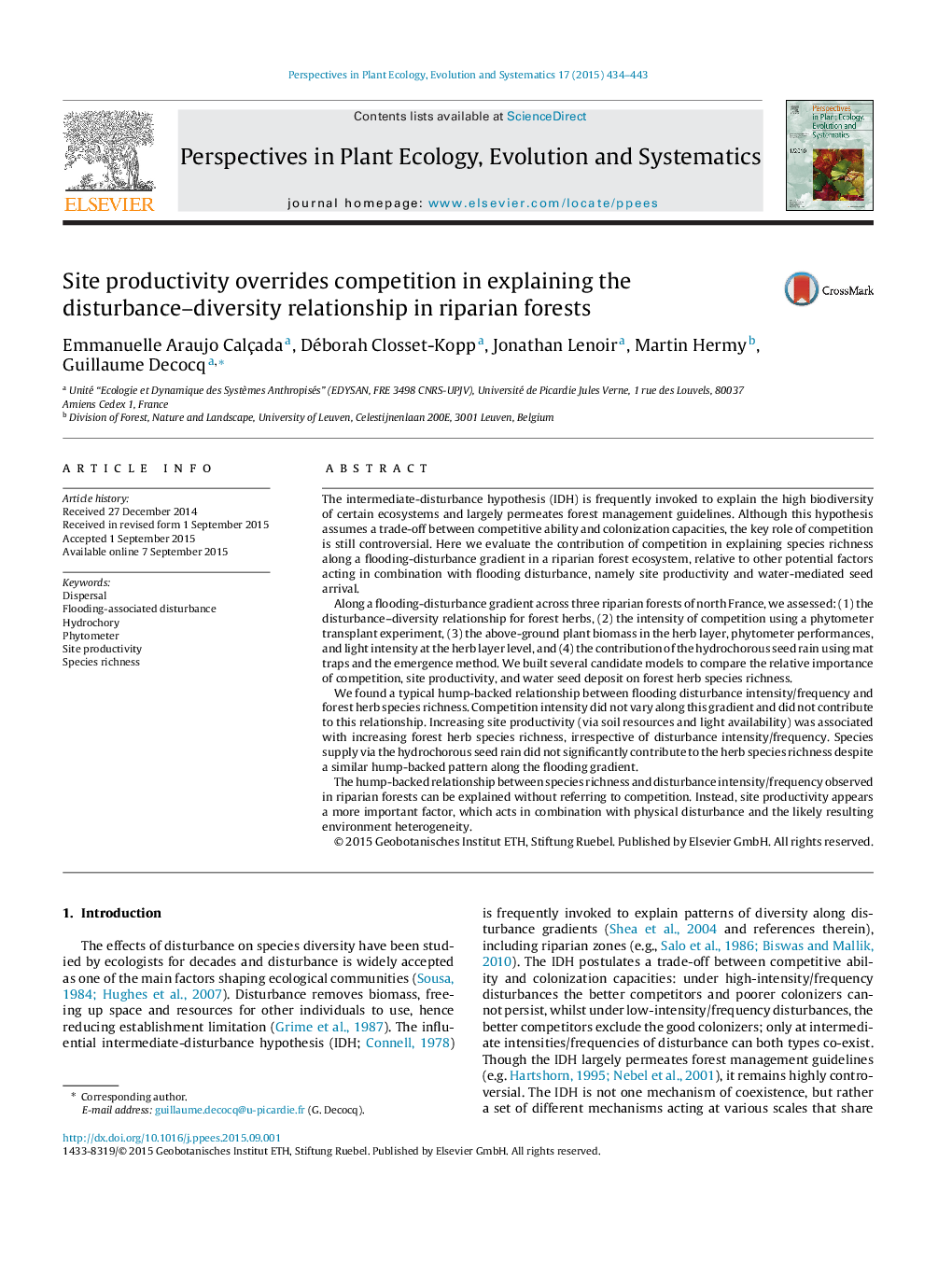| Article ID | Journal | Published Year | Pages | File Type |
|---|---|---|---|---|
| 4400942 | Perspectives in Plant Ecology, Evolution and Systematics | 2015 | 10 Pages |
•Forest herb species richness is studied along flooding-disturbance gradients.•Species richness peaks at intermediate disturbance intensity/frequency.•Site productivity but not competition intensity contributes to this pattern.•Despite a similar pattern, the water seed deposit did not explain species richness.
The intermediate-disturbance hypothesis (IDH) is frequently invoked to explain the high biodiversity of certain ecosystems and largely permeates forest management guidelines. Although this hypothesis assumes a trade-off between competitive ability and colonization capacities, the key role of competition is still controversial. Here we evaluate the contribution of competition in explaining species richness along a flooding-disturbance gradient in a riparian forest ecosystem, relative to other potential factors acting in combination with flooding disturbance, namely site productivity and water-mediated seed arrival.Along a flooding-disturbance gradient across three riparian forests of north France, we assessed: (1) the disturbance–diversity relationship for forest herbs, (2) the intensity of competition using a phytometer transplant experiment, (3) the above-ground plant biomass in the herb layer, phytometer performances, and light intensity at the herb layer level, and (4) the contribution of the hydrochorous seed rain using mat traps and the emergence method. We built several candidate models to compare the relative importance of competition, site productivity, and water seed deposit on forest herb species richness.We found a typical hump-backed relationship between flooding disturbance intensity/frequency and forest herb species richness. Competition intensity did not vary along this gradient and did not contribute to this relationship. Increasing site productivity (via soil resources and light availability) was associated with increasing forest herb species richness, irrespective of disturbance intensity/frequency. Species supply via the hydrochorous seed rain did not significantly contribute to the herb species richness despite a similar hump-backed pattern along the flooding gradient.The hump-backed relationship between species richness and disturbance intensity/frequency observed in riparian forests can be explained without referring to competition. Instead, site productivity appears a more important factor, which acts in combination with physical disturbance and the likely resulting environment heterogeneity.
